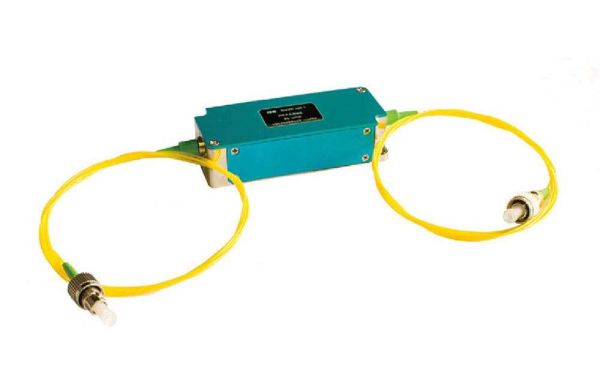Fiber-coupled acousto-optic modulators (FCAOMs) offer several advantages over other types of fiber modulators:
- High Optical Power Handling: A key strength of FCAOMs is their ability to handle high-power laser beams. This makes them suitable for applications like material processing and laser pumping where strong light intensity is needed.
- Wide Wavelength Operation: FCAOMs can function effectively across a broad range of wavelengths, typically from the ultraviolet to the mid-infrared spectrum. This versatility allows them to be used in various fiber optic systems.
- Fast Switching Speeds: FCAOMs achieve high modulation speeds, enabling them to control light pulses on the order of nanoseconds. This is crucial for applications requiring rapid light control, such as pulse generation and mode-locking in lasers.
- Low-Distortion Performance: FCAOMs introduce minimal distortion to the light signal compared to some other modulation techniques. This is essential for maintaining signal integrity in sensitive applications.
- Reduced Complexity: Since FCAOMs use sound waves for modulation, they don't require complex electrical connections within the device itself. This can lead to a more robust and reliable design.
Here's a quick comparison:
- Electro-optic Modulators (EOMs): While offering high modulation bandwidth, EOMs generally have lower power handling capabilities.
- Semiconductor Optical Amplifiers (SOAs):SOAs can achieve high dynamic range but may suffer from non-linear effects that distort the signal.
Overall, FCAOMs provide a valuable combination of high power handling, wide wavelength operation, fast switching speeds, and low distortion, making them a compelling choice for various fiber optic applications.






